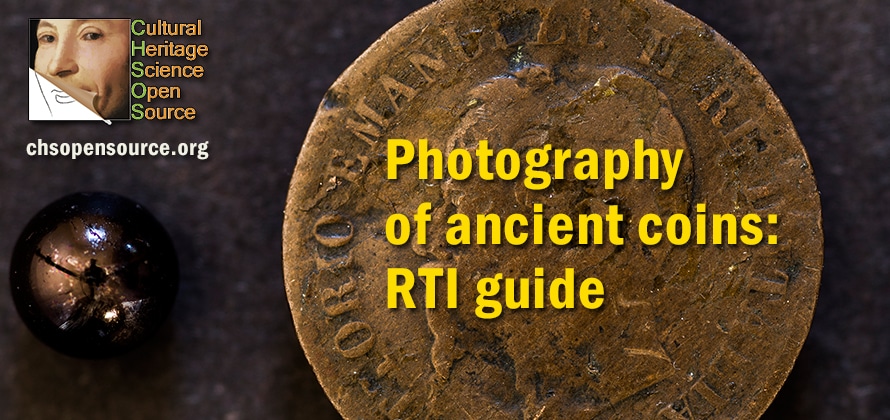
Photographing ancient coins is a pretty difficult task because of their reflective and uneven surface.
RTI (Reflectance Transformation Imaging) is a computational photographic technique used in a number of fields related to art examination and documentation. RTI provides a virtual and enhanced visualization of an object’s surface where the lighting direction can be changed interactively and enhancements can be performed to make surface’ details more visible. It relies on the Polynomial Texture Map method which is an image-based representation of the object’s surface achieved by capturing the object under lighting from different directions. It is used to visualize tiny incisions in paintings and historical prints as well as to document highly reflective objects such as coins. We introduced RTI in our Advanced Photographic Documentation Training module where we illustrate our lightweight equipment for standard and macro RTI and the procedures to acquire and edit images to create an RTI visualization file. RTI is also part of our instrumentation for Art and Archaeology examination. Visit CHI website for more info
How to prepare an RTI documentation of an ancient (and particularly worn) coin.
Equipment
- Nikon D800 (36 MP)
- reversible tripod
- ~ 5 mm RTI sphere
- 105 mm Nikon macro lens
- speed light with remote shutter


Procedure
The 27 images were taken with the speed light at a distance of 80 cm from the coin. The lens was set at aperture f/11. It is recommended to have the coin in the center of the frame so that to avoid the softening of the image on the border of the frame.


RTI visualization file
Once the RTI visualization file is ready it can be uploaded on the web. Click here to visualized it







